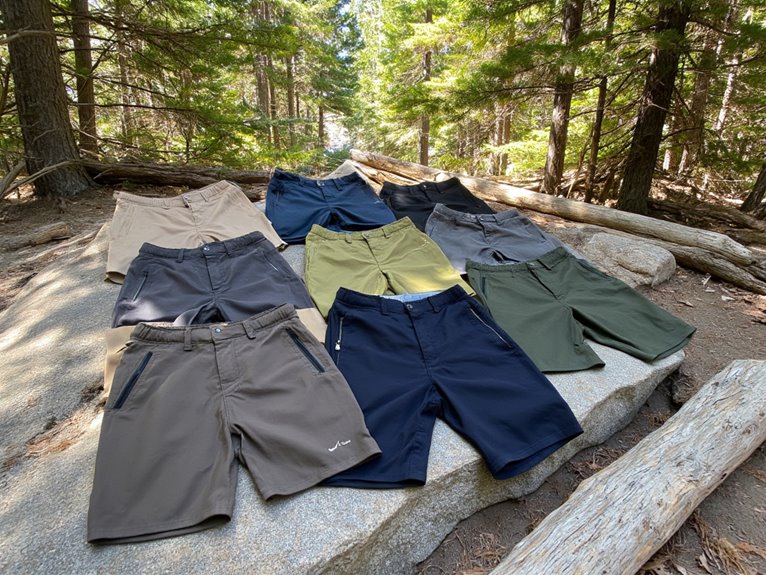Are Hydration Bladders Safe?
Hydration bladders, widely used by outdoor enthusiasts, pose several safety risks. Bacterial growth and contamination can thrive in the moist, dark interior, causing unpleasant odors, tastes, and health risks if not regularly cleaned and dried. Chemical leaching from manufacturing materials like BPA, phthalates, and PVC can also harm human health. In addition, material degradation and breakdown can occur due to environmental factors, leading to cracks or punctures. Proper cleaning and maintenance are vital to prevent these issues. To guarantee a safe and healthy hydration experience, discover the best practices and alternatives available.
We are supported by our audience. When you purchase through links on our site, we may earn an affiliate commission, at no extra cost for you. Learn more. Last update on 21st December 2025 / Images from Amazon Product Advertising API.
Bacterial Growth and Contamination
Hydration bladders can provide an ideal environment for bacterial growth and contamination, particularly when not properly cleaned and maintained.
The moist, dark interior of the bladder creates a perfect breeding ground for microorganisms to thrive. If not regularly cleaned and dried, bacteria can multiply rapidly, leading to unpleasant odors, tastes, and even health risks.
Additionally, bacteria can also colonize on the bladder's surface, making it difficult to completely eradicate.
Crucial to preventing bacterial growth and contamination is establishing a regular cleaning routine, using a mixture of soap and warm water, to prevent bacterial growth and contamination.
Failure to do so can result in a compromised hydration system, rendering it unsafe for use.
Chemical Leaching and Toxicity
Beyond bacterial growth and contamination, another critical concern with hydration bladders is the potential for chemical leaching and toxicity.
Chemicals used in the manufacturing process, such as BPA, phthalates, and PVC, can leach into the water, posing a risk to human health.
Exposure to these chemicals has been linked to various health problems, including cancer, reproductive issues, and hormonal imbalances.
In addition, the materials used in hydration bladders can also leach chemicals like antimony, which has been shown to have toxic effects on the kidneys and liver.
Moreover, choosing hydration bladders made from BPA-free, phthalate-free, and PVC-free materials is crucial to minimize the risk of chemical leaching and toxicity.
Material Degradation and Breakdown
As the materials used in hydration bladders are exposed to various environmental factors, such as UV radiation, extreme temperatures, and physical stress, they can undergo degradation and breakdown, compromising their structural integrity and potentially leading to leaks, cracks, and other failures.
This degradation can occur over time, even with proper storage and handling.
The breakdown of materials can lead to a range of consequences, from minor issues like discoloration or brittleness to more severe problems like cracks or punctures.
It is crucial to be aware of these risks and take steps to mitigate them, ensuring the safe and reliable use of hydration bladders.
Cleaning and Maintenance Best Practices
Proper cleaning and maintenance are essential to ensuring the safety and longevity of hydration bladders.
A well-structured cleaning schedule, paired with effective disinfection methods, can prevent the growth of harmful bacteria and mold, keeping users safe from waterborne illnesses.
Regular Cleaning Schedules
Regular cleaning schedules are crucial to preventing bacterial growth and extending the lifespan of hydration bladders, making them an essential part of responsible ownership.
A well-maintained hydration bladder can guarantee safe and healthy hydration on-the-go.
It's recommended to clean your hydration bladder after every use, or at the very least, once a week. This can be as simple as rinsing the bladder with warm soapy water and allowing it to air dry.
Additionally, storing the bladder in a cool, dry place can prevent bacterial growth.
Proper Disinfection Methods
Effective disinfection of a hydration bladder requires a combination of gentle yet potent cleaning agents and careful attention to detail to eliminate lingering bacteria and contaminants.
When choosing a disinfectant, opt for a product specifically designed for hydration systems, such as a mixture of water and unscented bleach or a commercial cleaning solution.
Always follow the manufacturer's instructions and take necessary safety precautions to avoid damaging the bladder material.
Thoroughly rinse the bladder and hose with warm water to remove any residue.
For added assurance, sanitize the bladder by filling it with a solution of one part white vinegar to two parts water, then letting it sit for 10-15 minutes before rinsing and drying.
Hydration Bladder Materials Compared
In terms of hydration bladders, the material used can substantially impact safety and performance.
This is why manufacturers have developed innovative materials that prioritize both durability and safety.
In this section, we'll delve into the key differences between BPA-free plastics, silicone-coated nylon options, and TPU film construction, examining their unique benefits and limitations.
BPA-Free Plastics Used
Most modern hydration bladders are crafted from BPA-free plastics, a deliberate design choice aimed at alleviating concerns surrounding the potential health risks associated with Bisphenol A.
This shift towards BPA-free materials has been a significant development in the industry, as it guarantees a safer drinking experience for users.
These plastics are engineered to be durable, flexible, and resistant to cracks, making them ideal for hydration bladders.
The BPA-free materials used in modern hydration bladders have undergone rigorous testing to confirm they meet stringent safety standards.
As a result, outdoor enthusiasts can enjoy their hydration bladders with confidence, knowing that their drinking water is safe from harmful chemicals.
Silicone-Coated Nylon Options
Beyond BPA-free plastics, silicone-coated nylon options have emerged as a popular alternative in hydration bladder materials, offering a unique set of benefits and trade-offs that warrant consideration.
These bladders boast a silicone coating that lines the interior of the nylon material, providing a non-porous and flexible surface that resists bacterial growth and is easy to clean.
The silicone coating also strengthens durability, allowing the bladder to withstand scratches and abrasions.
However, silicone-coated nylon bladders may be more prone to punctures and tears than other materials, and the silicone coating can break down over time, compromising the bladder's integrity.
Despite these limitations, silicone-coated nylon options remain a popular choice for outdoor enthusiasts seeking a reliable and safe hydration solution.
TPU Film Construction
In contrast to silicone-coated nylon options, TPU film construction offers a distinct set of characteristics that make it an attractive alternative for hydration bladders, boasting exceptional durability, flexibility, and resistance to abrasion and punctures.
TPU film's unique properties allow it to maintain its shape and structure even when stretched or bent, making it an ideal material for hydration bladders that need to withstand harsh outdoor conditions.
Additionally, TPU film is resistant to UV degradation, ensuring that it remains flexible and durable even after prolonged exposure to sunlight.
Its flexibility also allows for easier cleaning and maintenance, making TPU film construction a reliable choice for hydration bladders.
Health Risks and Consequences
Dehydration and bacterial contamination are two significant health risks associated with improper use and maintenance of hydration bladders, which can lead to severe consequences if left unchecked.
When hydration bladders are not properly cleaned and dried, bacteria can thrive, leading to waterborne illnesses. In addition, inadequate hydration can cause dehydration, which can impair physical performance and even lead to serious health issues.
In extreme cases, dehydration can cause heat stroke, organ failure, and even death.
Essential to follow proper cleaning and maintenance protocols to minimize the risk of bacterial contamination and dehydration. By taking proactive measures, outdoor enthusiasts can enjoy their adventures while ensuring their safety and well-being.
Safe Alternatives and Options
Fortunately, outdoor enthusiasts can opt for safe and reliable alternatives to traditional hydration bladders, such as collapsible water bottles and hydration systems with built-in antimicrobial properties.
These alternatives offer a hygienic and convenient way to stay hydrated on-the-go.
Collapsible water bottles, made from BPA-free materials, are lightweight, compact, and easy to clean.
Meanwhile, hydration systems with antimicrobial properties inhibit the growth of bacteria and mold, ensuring a clean drinking experience.
These innovative solutions cater to the needs of outdoor enthusiasts, providing a safe and reliable way to quench their thirst while exploring the great outdoors.



